Mallard (Anas platyrhynchos)
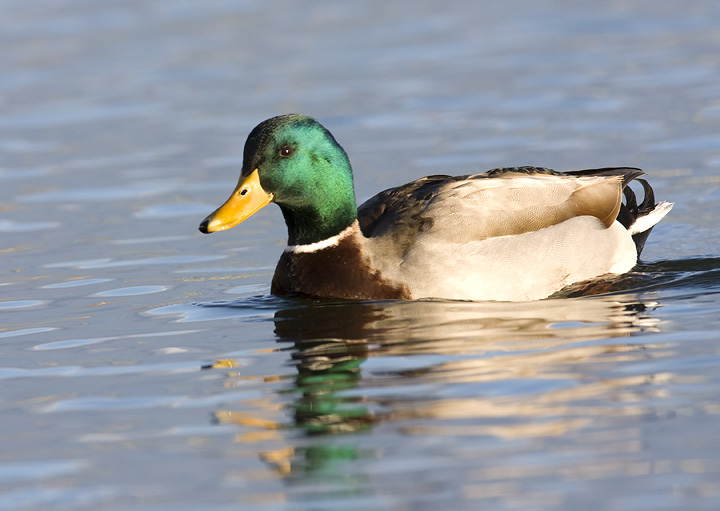
Above: A drake Mallard practically glows in the morning light (Dorchester Co., Maryland, 2/10/2008). Below: Male (drake) on left, female (hen) on right. Photographed at Southwest Area Park (SWAP) in Baltimore Co., Maryland (summer 2004).

Below: Close-up of adult female - note dark center of the orange bill. Photographed at Schoolhouse Pond in Upper Marlboro, Prince George's Co., Maryland (11/5/2005).
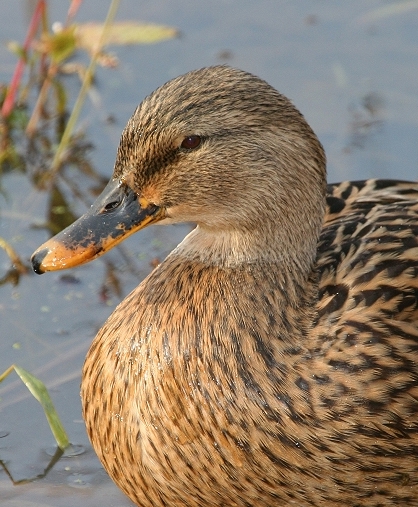
Below: A female Mallard in Wicomico Co., Maryland (3/4/2007).
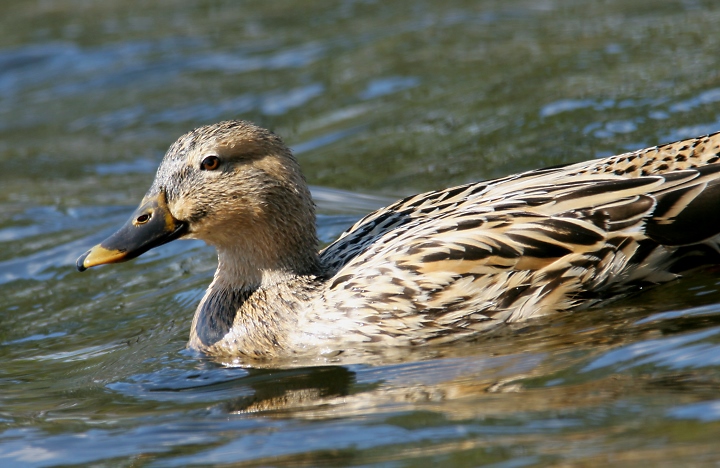
Below: A patriotic Mallard - a male in eclipse plumage - poses at the World War II Memorial in Washington, D.C. (8/25/2007).
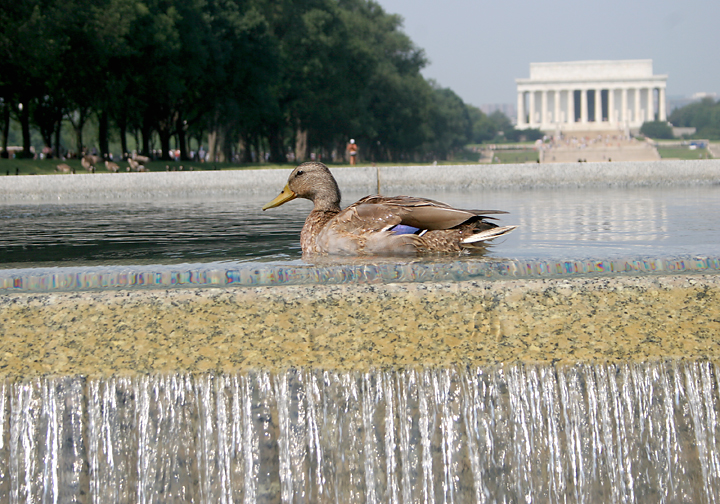
Below: A late brood of Mallard ducklings forage at North Beach, Calvert Co., Maryland (8/18/2007).
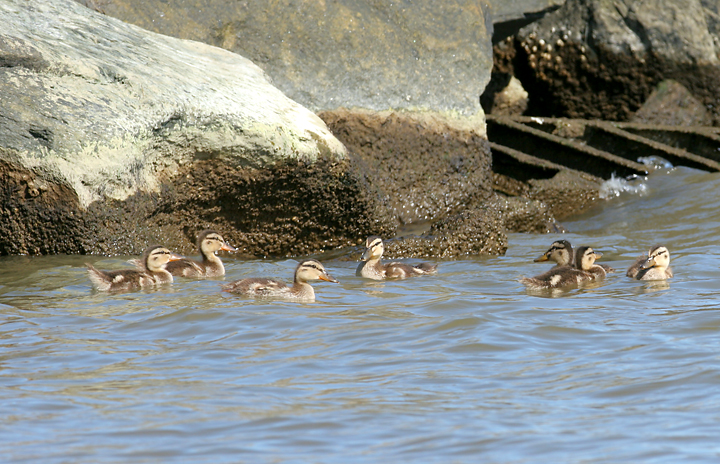
Below: A drake Green-winged Teal forages amidst a flock of Mallards on a frozen pond in Carroll Co., Maryland (1/27/2008).
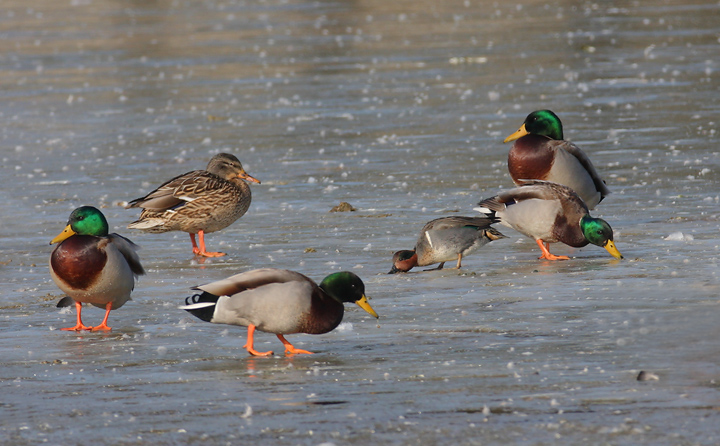
Below: An American Black Duck x Mallard hybrid at Ocean Pines, Maryland (11/2/2008).
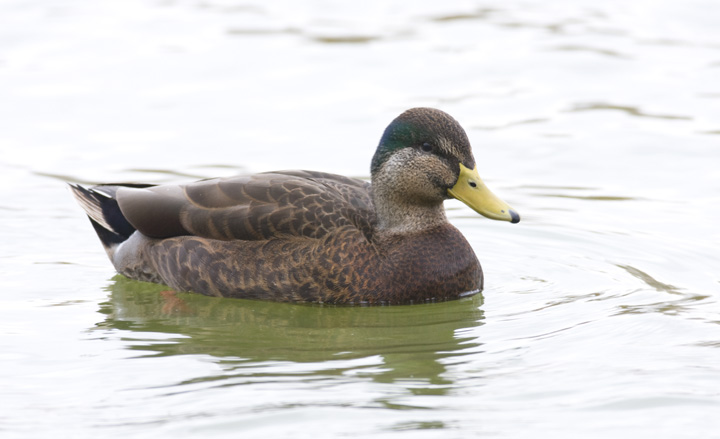
Below: Mallard nest in Garrett Co., Maryland (4/29/2011).
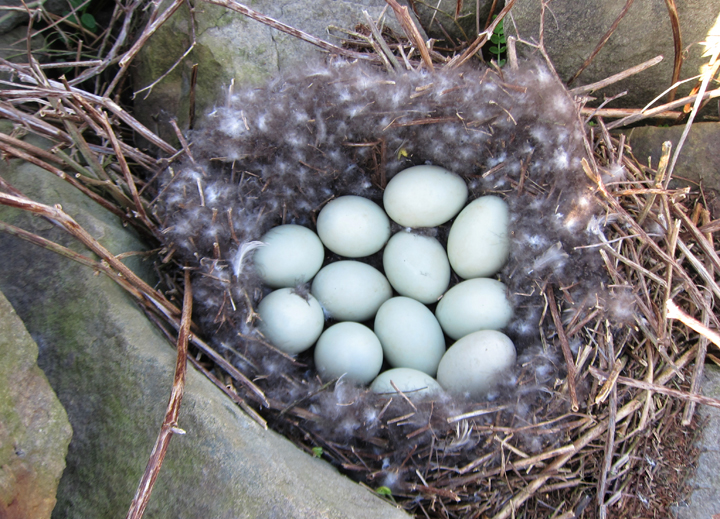
Below two: Close-ups of a molting drake Mallard in P.G. Co., Maryland (9/14/2007).
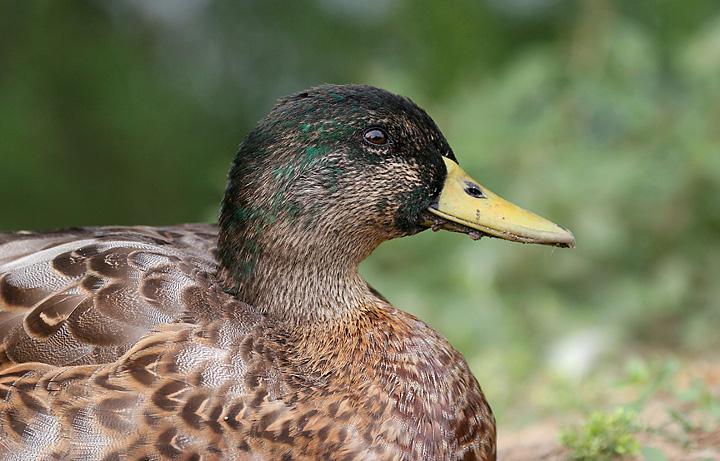
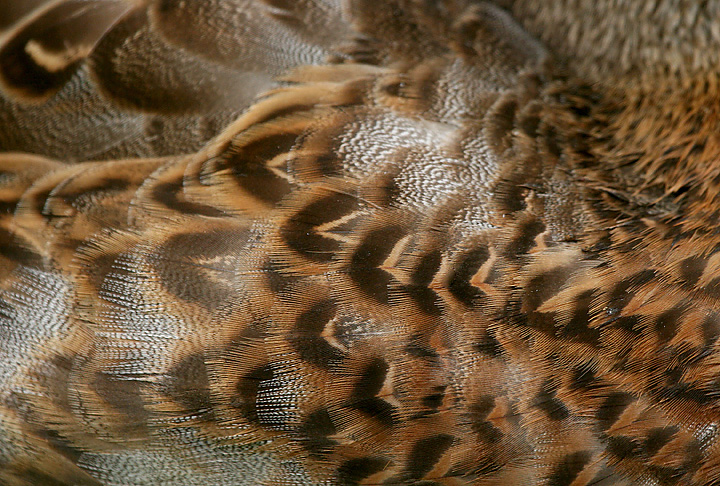
Comments: One of the most common and well-known waterfowl species in the world, the Mallard is found almost anywhere in the U.S. near shallow freshwater. Here in the Mid-Atlantic, female and juvenile Mallards can be difficult to distinguish from American Black Ducks at a distance. The American Black Duck (Anas rubripes) has much darker plumage overall (with lighter head), and its purplish speculum (patch of feathers on the wing) lacks the Mallard's white border. The Mottled Duck (Anas fulvigula) of the Southeast is also closely related.
